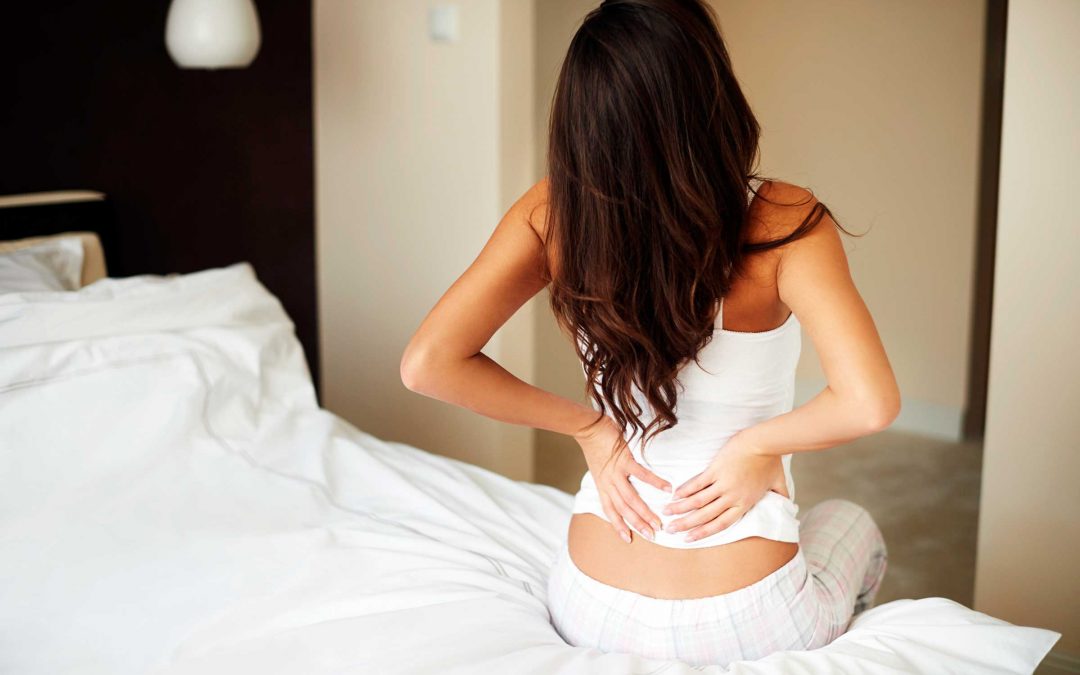Having a 9-5 job, being behind a desk all day long, or too much physical toil can a toll on your body. Resting for 8-hours a day can still leave you sore from a hard day’s work. Back pain is one of the most common problems faced by those who lift up heavy stuff all day long or even for a desk jockey. Before going for costly medications or useless machines, give yoga a thought. It is simple, easy to do and won’t cost you buck! Few of the many yoga asanas that have been found to have miraculous effect in relieving back pains are asanas like bandh konasana. These can be practiced at any time you like yoga asanas for back pain.
Knee Hugs

Knee Hugs are also known as Apanasana. There are many variants of this posture. It is also, one of the easiest of them all. The benefits of knee hugs include better mobility. It helps reduce joint and muscle pain in the knees and helps in better blood circulation.
Doing knee hugs is fairly simple. You need to stand straight. Next, you need to bring your knee up to your chest. Do not worry if you cannot fully bring it to your chest. Try to get it right eventually. One of the most essential things to note here is a balance. You need to maintain your balance if you are doing standing knee hugs, which is why many switch to a supported version of knee hugs. In a way, Pawan Mukta asana can also be counted as a modified version of knee hug yoga asanas for back pain.
Knee hugs help in stretching your thigh muscles. This includes muscle groups like hamstring at the back and glutes in front. Apart from this, knee hugs also help in stretching your lower hips and pelvis. It is a great way to start off a series of exercise or to end a series.
Thread the Needle

Thread the needle. Now, what do you imagine when you hear such a thing? Thread the needle is also known as Parsva Balasana in Sanskrit. It gets its name from three Sanskrit words, parsva, Bala and asana. Parsva means plank, Bala is the Sanskrit word for ‘boy’ and asana means posture.
Start off by sitting on your knees on a yoga mat or relatively soft surface. Next, get on your hands and knees. After this, move your right hand forward. Then slowly take your left hand to your right. Your chest should start facing right. Note that your legs or lower torso should not move. Stretch your left hand as much as you can. Don’t forget to breathe gently. Now slowly bring yourself back to your hands and knees as you initially were. Repeat the same process with your right side.
Thread the needle yoga pose helps in stretching your hips. It helps in removing the stiffness in your shoulders. It helps in exercising muscles in your upper chest as well. Be sure not to twist yourself too much while doing this. Also, do not put pressure on your neck. You can follow this pose up with asanas like Vajrasana.
Gentle Bridge

Gentle bridge, also known as Setu bandhasana, is a widely practiced posture of yoga. Its name “bridge-binding pose” in Sanskrit. It is fairly simple but a bit difficult to execute. It needs to be performed under supervision.
To do the gentle bridge pose, start by lying down on your back. Next, make a small gap between your legs. Now, lift your lower back with support from your legs. Do it slowly and maintain a breathing rhythm. Your hands should be at your sides with the palm facing the ground. It helps in getting extra support. Do not go overboard and end up hurting your neck. Try to keep the pressure off your lower spine. Hold the pose for about a minute and then slowly come back to the initial position.
Gentle bridge pose helps in majorly in relieving the stress in your back muscles. Added benefits include better digestion and shoulder joints exercising. You should try to avoid this one pose if you have some kind of previous neck injury because it exerts some pressure on the neck. Same goes for any kind of lower back injury and yoga asanas for back pain.
Knee Sway

Knee sway isn’t exactly a yoga pose. Rather it can be regarded as one of the poses which can help you build up to a major yoga pose or exercise routine. Knee sways are commonly practiced in gyms before a workout. But you can do it at home. At first glance, it seems like a piece of cake.
Start by lying down on your back with arms at your side and legs stretched out. Bring your arms to your sides such that they form a line with your shoulder. Palms should face down. Next, bring your legs up, bend the knees. Your thigh should form a right angle with the ground. Now, gently move your lower back to the right. Hold for a moment and come back. Repeat with your left. You can do two variations here- either hold the pose on either side or do a quick succession.
Keep in mind to maintain a good breathing pattern and maintain your balance. Your palms should always touch the ground. There should no lifting of arms as you sway to one side. Knee sways help relax your lower spine. It helps in pelvic movement as well.
Bound Angle Pose

Bound angle pose involves you sitting in a pose similar to how cobblers used to sit in medieval India. It is a part of hatha yoga. Bound angle pose does not require any equipment or doing any complicated pose. It can be thought of as a form of sitting.
Start off by sitting with your hands at your sides and legs stretched out in front. Bring your legs near your torso by making contact between the heels. At this point, your legs should be bent and raised while the soles of your feet should touch each other. Next, take your arms and hold your feet in place. That’s about it.
Bound angle pose helps in opening your hips. It is very simple, and you can do it anytime. The name Baddha Konasana is given to this yoga pose. Contraindications for bound angle pose include cardiac problems or lower hip or groin injury.
Yoga asanas have been in practice since time immemorial. They do not require any equipment like the exercises you do in gyms. They do not have any prerequisites what so ever. Most of all, they can help with almost any kind of body ailments. That is the beauty of it.




Really worth going through more than once!!!